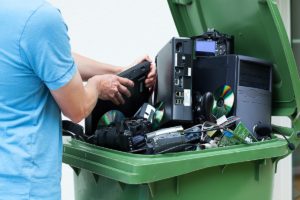In industries where metal structures and components are vital—from construction and manufacturing to aerospace and oil and gas—corrosion poses a significant challenge. The degradation of materials caused by chemical reactions with their environment not only compromises safety but can also lead to unexpected failures in critical systems. To combat this, engineers and researchers rely on corrosion testing as a crucial method for evaluating the durability and longevity of materials under varying environmental conditions.
Understanding Corrosion
Corrosion is a natural process that occurs when materials, particularly metals, react with environmental elements such as moisture, oxygen, salt, chemicals, or extreme temperatures. This reaction leads to the gradual deterioration of the material’s properties.
The most common type is rusting, which affects iron and steel when exposed to oxygen and water. However, corrosion can take many forms, including pitting, galvanic corrosion, crevice corrosion, and intergranular corrosion—each with its own characteristics and risks.
Why Corrosion Testing Matters
Corrosion testing is essential for predicting how materials will behave over time in specific environments. By simulating real-world conditions in a controlled setting, this testing allows manufacturers and engineers to determine the resistance of a material to corrosive forces. This insight guides the selection of appropriate materials for projects, ensuring that components will meet safety standards and functional requirements over their expected lifespan.
This type of testing plays a vital role in industries such as:
-
Aerospace: Aircraft are regularly exposed to harsh environments, including high humidity and salt-laden air, making corrosion resistance critical for both safety and performance.
-
Oil and Gas: Pipelines, offshore rigs, and storage tanks are frequently subjected to corrosive chemicals and environments. Accurate corrosion testing helps prevent catastrophic failures.
-
Automotive: Cars and trucks encounter a wide range of environmental conditions, from road salt in winter to coastal humidity, making material longevity a priority.
-
Construction: Bridges, buildings, and infrastructure projects depend on corrosion-resistant materials to maintain structural integrity.
Common Corrosion Testing Methods
There are several standard methods for corrosion testing, each designed to assess a material’s performance in different scenarios. The choice of method depends on the type of material, expected service environment, and desired lifespan of the product.
1. Salt Spray (Fog) Testing
Salt spray testing is one of the most widely used methods, especially in quality control settings. In this test, materials are exposed to a fine mist of salt water in a closed chamber for a specified period. The appearance of rust or corrosion products is then monitored. This accelerated test is useful for comparing the corrosion resistance of different coatings or surface treatments.
2. Cyclic Corrosion Testing
Unlike continuous salt spray tests, cyclic corrosion testing mimics real-world conditions more closely by alternating between different environmental phases, such as wetting, drying, and salt exposure. These cycles provide a more accurate prediction of how a material will perform over time in natural environments.
3. Electrochemical Testing
Electrochemical methods measure corrosion rates by analyzing the flow of electrical current between metal surfaces in a conductive solution. Techniques like potentiodynamic polarization and electrochemical impedance spectroscopy (EIS) offer detailed insight into the corrosion mechanisms at work and the effectiveness of protective coatings.
4. Immersion Testing
In immersion testing, materials are submerged in corrosive liquids such as acids, alkaline solutions, or saltwater for an extended period. The test evaluates both the chemical resistance and structural durability of the material under prolonged exposure.
5. Atmospheric Exposure Testing
This method involves placing test samples in outdoor environments that are representative of their intended use. While slower than accelerated laboratory methods, atmospheric exposure testing provides valuable data on long-term performance under actual conditions.
Designing Better Materials Through Corrosion Testing
Advancements in material science have led to the development of alloys, coatings, and composites with enhanced corrosion resistance. Corrosion testing is a critical step in the research and development phase, allowing scientists to refine formulations and evaluate their performance before full-scale production.
For instance, stainless steel alloys with varying chromium and molybdenum content may be subjected to salt spray and electrochemical tests to determine the most effective composition. Similarly, automotive paint systems undergo rigorous corrosion testing to verify their ability to protect vehicle surfaces in diverse climates.
Extending Product Lifespan and Safety
The data obtained from corrosion testing can inform maintenance schedules, inspection intervals, and replacement timelines. By identifying vulnerable areas and likely failure points, engineers can proactively design maintenance programs that reduce downtime and improve operational efficiency.
Corrosion testing is a cornerstone of modern material engineering, helping ensure that products and infrastructure remain safe, durable, and functional throughout their intended lifespan. As industries face increasing demands for performance, safety, and sustainability, the importance of understanding and mitigating corrosion cannot be overstated.
Through a combination of standardized testing methods, advanced technologies, and strict adherence to international protocols, corrosion testing provides the insights needed to make informed decisions about material selection, product design, and long-term durability. In a world where reliability matters, corrosion testing delivers confidence.







